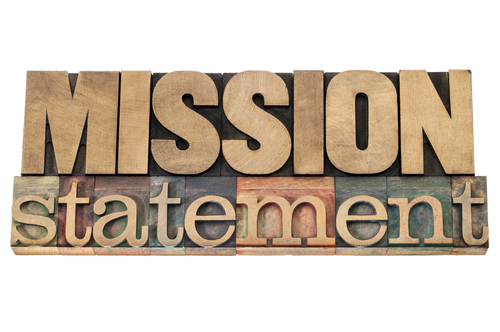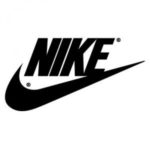
Where does customer loyalty come from?
Think about those brands that you purchase from over and over, even when there are cheaper options out there. Do you usually fly on a particular airline? Do you buy your coffee from the same place every morning? Do you recommend a specific restaurant whenever out-of-towners ask for suggestions?
Often, the reason we stay loyal to brands is because of their values. The best brands strive to combine physical, emotional, and logical elements into one exceptional customer — and employee — experience.
When you successfully create a connection with your customers and employees, many of them might stay loyal for life — and you’ll have the chance to increase your overall profitability while building a solid foundation of brand promoters. But achieving that connection is no easy task. The companies that succeed are ones that stay true to their core values over the years and create a company that employees and customers are proud to associate with.
Free guide: How to define inspiring mission and vision statements.
That’s where company vision and mission statements come in. A mission statement is intended to clarify the ‘what’ and ‘who’ of a company, while a vision statement adds the ‘why’ and ‘how’ as well. As a company grows, its objectives and goals may change. Therefore, vision statements should be revised as needed to reflect the changing business culture as goals are met.
Check out some of the following company vision and mission statements for yourself — and get inspired to write one for your brand.

The Difference Between Mission and Vision
Let’s start with a bit of a vocabulary lesson. A mission statement declares an organization’s purpose, or why it exists. That often includes a general description of the organization, its function, and its objectives.
A mission statement often informs the vision statement, which describes where the company aspires to be in the future. These two statements are often combined to clearly define the organization’s reason for existing and outlook for internal and external audiences like employees, partners, board members, consumers, and shareholders.
So, what does a good mission and vision statement look like? Have a look at the examples below.
A few of the Best Vision & Mission Statement Examples From Real Companies

NIKE: “To bring inspiration and innovation to every athlete* in the world.” The legendary University of Oregon track and field coach, and Nike co-founder, Bill Bowerman said, “If you have a body, you are an athlete.”

Apple: “Apple designs Macs, the best personal computers in the world, along with OS X, iLife, iWork and professional software. Apple leads the digital music revolution with its iPods and iTunes online store.

American Express: “We work hard every day to make American Express the world’s most respected service brand.”

Starbucks: “Our mission: to inspire and nurture the human spirit – one person, one cup and one neighborhood at a time.”

IKEA: “To create a better everyday life for the many people.”

JetBlue “to bring humanity back to air travel.” The airline does this by delivering value, service, style, and comfort to their customers—and to their employees, all of whom are called “crewmembers.”

BREAKING DOWN ‘Mission Statement’
A company’s mission statement seeks to define its culture, values, ethics, and fundamental goals, and how these apply to its stakeholders. The statement reveals what the company does, how it does it, and why it does it. A company’s stakeholders – employees, distributors, suppliers, shareholders, community, etc. – use this statement to align their goals with that of the company. Prospective investors may also refer to a mission statement to see if the values of the company aligns with theirs. For example, an ethical investor against tobacco products would probably not invest in a company whose mission is to be the largest manufacturer of cigarettes globally.
A company’s mission statement differs from its vision statement. While the mission statement remains unchanged for the most part and represents who the company is or aspires to be for the entirety of its existence, the vision statement can change and outlines what the company needs to do to remain who it has presented itself to be. In effect a company’s mission is its identity, and the vision is its journey to accomplishing its mission.
Mission statements vary considerably from company to company. The following examples are the mission statements of some of the trending companies as of 2017:
- Microsoft – Empower every person and organization on the planet to achieve more.
- Bill & Melinda Gates Foundation – We see equal value in all lives. And so we are dedicated to improving the quality of life for individuals around the world.
- Chipotle – To change the way people think about and eat fast food.
- MGM Resorts International – The leader in entertainment & hospitality – a diverse collection of extraordinary people, distinctive brands and best in class destinations.
- Nike – To bring inspiration and innovation to every athlete in the world.
- Walmart – We save people money so they can live better.
- Starbucks – To inspire and nurture the human spirit – one person, one cup and one neighborhood at a time.
- Tesla – To accelerate the world’s transition to sustainable energy.
- Airbnb – Belong anywhere
- JP Morgan – To be the best financial services company in the world
It is not uncommon for the largest companies to spend many years and millions of dollars developing and refining their mission statement, with many of these mission statements eventually becoming household phrases.
Mission statements aren’t just for small or large companies. Many of the most successful individuals, professionals and investors have taken the time to craft a personal mission statement. These personal mission statements often incorporate the financial, professional, spiritual, and relational aspects of life. This in turn helps the individual to keep a healthy work/life balance that increases their personal achievement in all of these areas.
